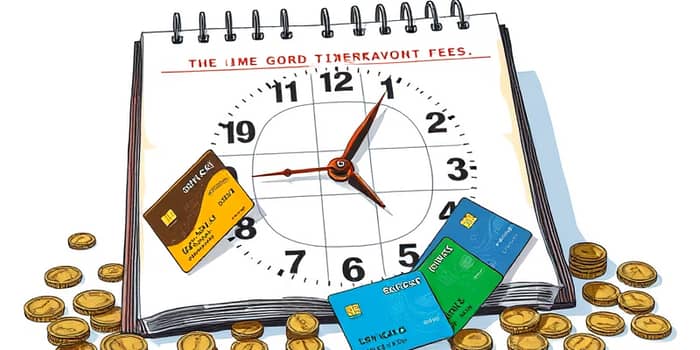
Navigating the world of credit card perks can feel overwhelming, especially when those enticing benefits come with hefty annual fees. Yet, by understanding how and when your issuer bills these charges, you can retain valuable rewards without draining your wallet. This guide will empower you with actionable insights and effective annual fee avoidance strategies that can save you hundreds of dollars each year.
Annual fees are recurring charges that many credit cards levy to support premium benefits such as travel rewards or luxury perks. In 2022, the average fee for cards that charge one was about $105, though some top-tier products range between $95 and $500 annually. These fees help issuers offset the cost of issuing rewards, airport lounge access, insurance protections, and other premium services.
For cardholders, the break-even point is straightforward: if you pay a $100 fee, you must extract at least $101 in rewards or services to justify keeping the card. Failing to do so effectively means you’re paying out of pocket for benefits you don’t fully use.
Credit card companies typically charge annual fees on the anniversary of account opening. By planning a product change or refund request at just the right moment—usually one to two months before your fee posts—you can sidestep the charge altogether or even secure a refund if the fee has already been billed.
Upgrading or downgrading your card within the same issuer family can transform a $95 annual fee into a $0 one, while preserving your credit history and spending line. Alternatively, you might upgrade to a richer rewards card right after the fee posts to capture a new bonus period before any additional fees hit.
1. Identify Your Renewal Date: Review your online account or monthly statements to confirm when the annual fee posts each year. Mark this date on your calendar and set reminders two months prior.
2. Evaluate Card Value: Analyze your past year’s spending. Did you utilize travel credits, lounge access, or bonus categories enough to justify the fee? If not, plan to downgrade or negotiate.
3. Initiate Product Changes Early: Aim to request a downgrade, upgrade, or negotiation at least 30 days before your fee posts. Issuers often take several weeks to process these requests.
4. Leverage Post-Charge Refunds: If your annual fee is already billed, you may be entitled to a prorated refund by downgrading or canceling shortly after the fee posts. Ask customer service about a refund window.
5. Document Everything: Keep detailed notes of your calls, including dates, representative names, and any offer details. This record can prove invaluable if disputes arise.
While product changes can save you significant money, be aware of potential downsides. Downgrading may forfeit outstanding credits, sign-up bonuses, or travel benefits that haven’t been used. Conversely, upgrading too early might trigger a higher fee before you’ve maximized the previous card’s perks.
Cancelling a long-held account could slightly lower your average account age, impacting your credit score. However, when done thoughtfully—and only after redeeming all rewards—closing an unused premium card can be worthwhile if the fee far exceeds your net benefit.
Mastering the timing of your credit card upgrades, downgrades, and negotiations can turn a costly annual fee into an opportunity for savings. By following these annual fee avoidance strategies and planning at least a month in advance, you’ll be well-equipped to retain your rewards, preserve your credit history, and avoid unnecessary charges.
Take control of your wallet today: review your renewal dates, analyze your benefits, and engage proactively with your issuer. With careful timing and informed decisions, you can keep enjoying premium perks without paying a penny more than you must.
References













